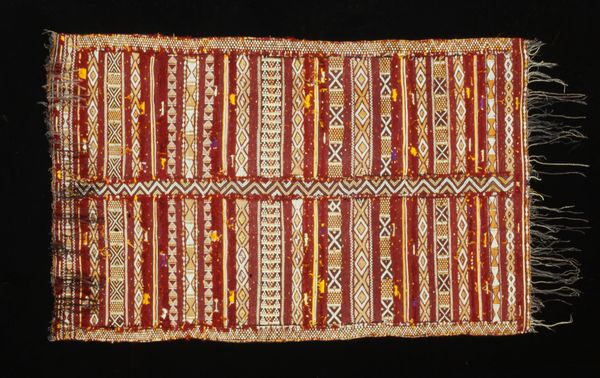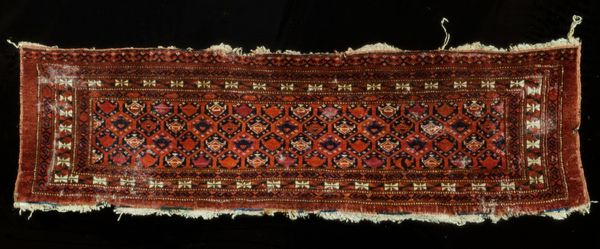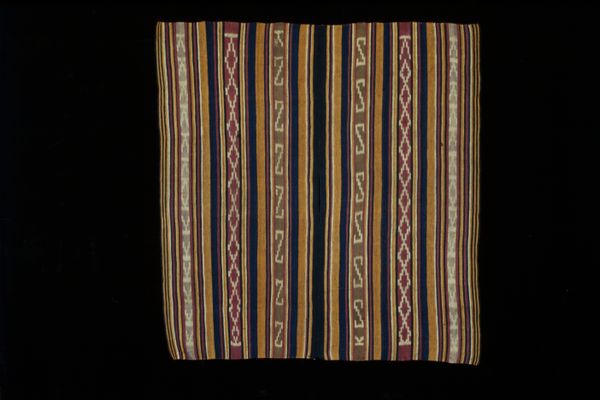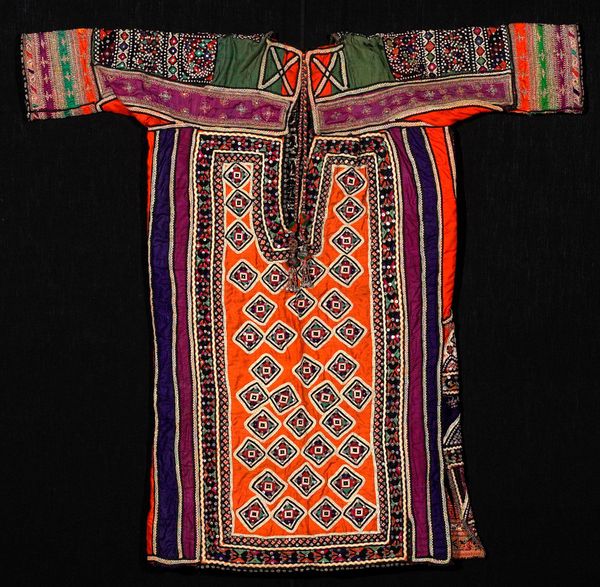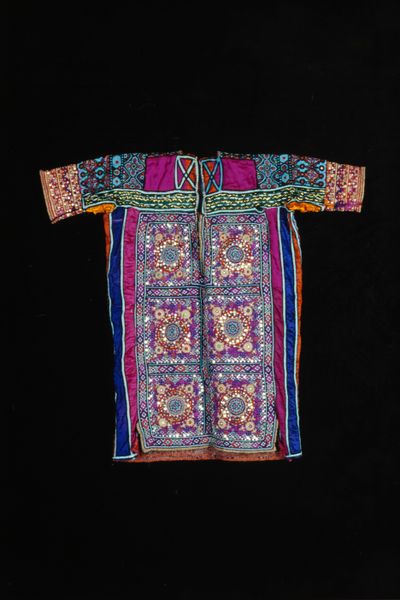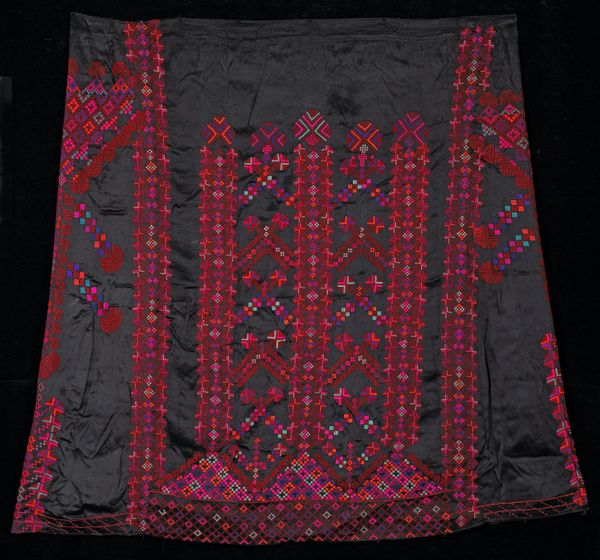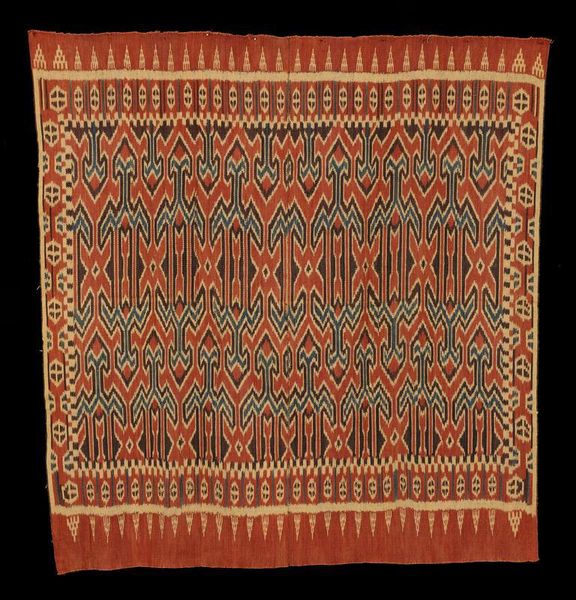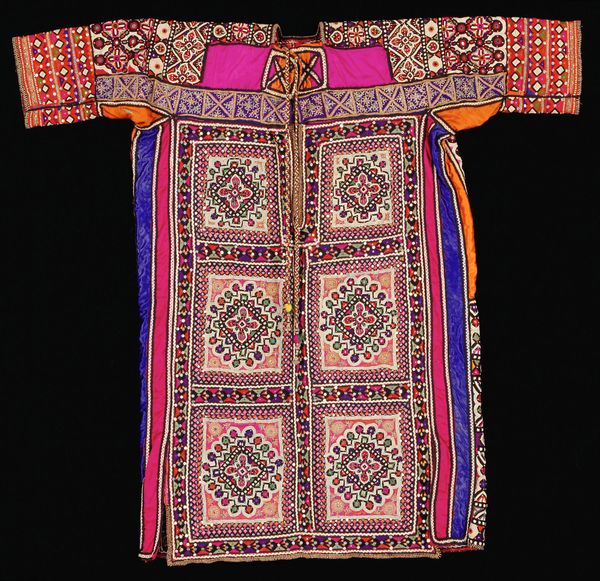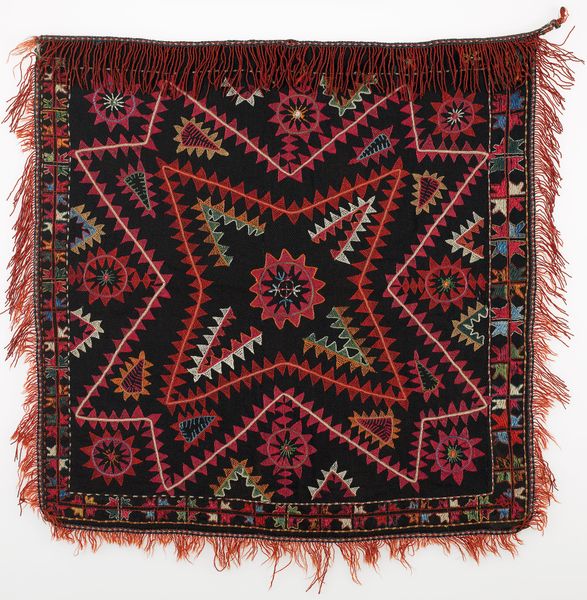
fibre-art, silk, weaving, textile, cotton
#
fibre-art
#
silk
#
asian-art
#
weaving
#
textile
#
geometric pattern
#
geometric
#
cotton
Dimensions: 10 1/4 x 8 1/2 in. (26.04 x 21.59 cm)
Copyright: Public Domain
Editor: Here we have a Hmong Apron, made around the early 20th century using fibre art techniques and materials like silk, cotton and other textiles. The patterns and colors feel really vibrant to me, but I’m also struck by how precisely it’s woven. What can you tell me about its cultural significance? Curator: This apron transcends mere functionality; it embodies cultural identity and resistance. These textiles served as powerful forms of self-representation for the Hmong people, particularly during times of displacement and cultural disruption. The geometric patterns aren't just decorative—they're a visual language, often encoding lineage, cosmological beliefs, and historical narratives. Editor: So, it’s like a coded message? How would someone read it? Curator: Think of it as a dialogue. The maker, likely a woman, engages with tradition while also asserting her own agency. Each motif could represent a specific clan, or perhaps a migration story. Consider the labor involved—the spinning, dyeing, weaving, all acts of cultural preservation in the face of assimilation pressures. What does the apron communicate about the role of women in Hmong society, would you say? Editor: I guess it speaks to how important women’s work is, because it's literally woven into their history and culture? Also that textile production allowed women to retain cultural memory while their community experienced upheaval? Curator: Precisely. And beyond the visual symbolism, the very act of creating these textiles was a form of resistance. The apron becomes a testament to the Hmong people’s resilience. Editor: It's amazing how much this beautiful, functional object can tell us about Hmong history and culture. I’ll definitely be looking at textiles differently from now on! Curator: Agreed. Objects like this apron offer us a tangible connection to lived experiences and remind us of the power of art to tell stories of resistance and survival.
Comments
No comments
Be the first to comment and join the conversation on the ultimate creative platform.


